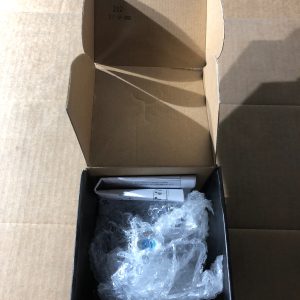|
These instructions are designed to give you basic information about the structure and building stages of a sauna. In these instructions, the sauna is built into a ready-made room with walls made of concrete blocks and a tiled floor. The ventilation system is mechanical. The walls are panelled throughout in order to keep the heater power at a moderate level. However, a glass door is installed when determining the right heater power level, the door must be taken into account as 1.5 m3 of additional room volume.
Planning Stage
Requirements Set By The Heater
- Carefully read the heater installation instructions, especially the safety distances. No combustible materials may be located inside the indicated safety distances. Not adhering to the safety distances causes a fire hazard. The safety distances of a wood-heated stove can be reduced with a protective sheath (see the stove installation instructions).
- If the electric heater features an external sensor, you must be able to place it precisely as prescribed in the installation instructions.
- If you have chosen a Combi heater with a steamer, the sauna room must have a floor drain. If you choose a Combi model with automated water dispensing, there must be a water supply near the heater. Furthermore, when planning the electrical wiring, it must be taken into consideration that Combi heaters are always controlled with a separate control panel.
Cables
Familiarise yourself with the wiring required by the lights, the heater and the control panel or unit and decide whether you want to have the cables under or on the panelling boards.
Sauna Decoration
- These instructions describe the installation of straight Formula benches. Harvia offers a wide selection of bench models.
- Note that the bench supports require reinforcements in the walls. The locations of the supports depend on the chosen bench model.
Floor And Ventilation
Floor
Waterproof the floor in accordance with building regulations. When selecting the flooring material, note that water thrown onto the heater washes off eroded stone that may stain white materials. Therefore, we recommend choosing a dark flooring. Pillar heaters must always be installed onto a non-combustible floor, as hot stone fragments may fall through the steel frame.
The flooring material must also cover 1020 cm (3.93″ – 7.87″) of the walls. You can attach the material either directly onto the wall or onto plywood attached to the wall.
Ventilation
A. Placement of the supply air vent. If mechanical exhaust ventilation is used, place the supply air vent above the heater. If gravity exhaust ventilation is used, place the supply air vent below or next to the heater. The diameter of the supply air pipe must be 50100 mm.
Heaters with a separate temperature sensor: the supply air vent of the sauna must not be near the temperature sensor!
B. Exhaust air vent. Place the exhaust air vent near the floor, as far away from the heater as possible. The diameter of the exhaust air pipe should be twice the diameter of the supply air pipe. If the exhaust air vent is in the washroom, the gap underneath the sauna door must be at least 100 mm(3.93″). Mechanical exhaust ventilation must therefore be used.
C. Optional vent for drying (closed during heating and bathing). The sauna can also be dried by leaving the door open after bathing.
Framing
- Attach framing studs (50 x 50 mm) to the walls. Space the studs by 600 mm (23.62″) or in accordance with the width of the insulation material.
- Attach the ceiling frames to the wall frames. The room height of a sauna is typically 2,1002,300 mm. The minimum height depends on the heater. The distance between the upper bench and the ceiling should not exceed 1,200 mm (47.24″).
Heat Insulation
Set the insulation materials between the framing studs. Make sure that there are no gaps in the insulation. The ceiling insulation is a particularly significant factor in energy efficiency, so install a double insulation (at least 100 mm / 3.93″) to the ceiling.
Humidity Proofing (Aluminium Foil)
The purpose of aluminium foil used as humidity proofing is to keep the humidity inside the sauna. The humidity proofing must be sealed throughout in order to prevent humidity from entering the structures. The aluminium foil is attached sparsely with staples, for example. Set the shiny side of the foil towards the sauna interior.
- First, attach the aluminium foil to the ceiling and fold the edges onto the walls, so that the ceiling and wall foils overlap well. Tape the seams carefully with aluminium tape.
- Install the aluminium foil onto the walls and tape the seams. We do not recommend placing seams in corners, as this makes the taping more difficult.
- Tape the lower edges of the aluminium foil onto the upper edge of the floor tiling or onto the waterproofing.
- Tape all feed-through openings so that they are sealed!
Nailing Battens, Bench Supports And Heater Support
- Attach nailing battens (e.g. 22 x 50 mm) onto the ceiling where the framing studs are placed.
- Attach battens onto the walls. Measure the battens so that the upper ends are approximately 20 mm (0.78″) below the ceiling battens. The battens must be installed vertically to allow air to travel up from the bottom behind the panelling boards. If you wish to install the panelling boards vertically, install another set of battens horizontally onto the vertical battens.
- Check the bench heights from your bench plan and install reinforcements into the planned locations on the bench support attachments. Build the reinforcements from wood that matches the thickness of the nailing battens. The width can be 90 mm(3.54″), for example. Attach the reinforcements to the frame.
- If you have chosen a wall-mounted heater, install a support (A) onto the wall for the heater mounting screws. The support can be made of plywood, for example. See the heaters instruction manual for the locations of the mounting screws.
- Make sure that the cables are taken into consideration. (See section 1. Planning stage.)
Panelling Boards
- Nail the panelling boards onto the nailing battens. Begin from the ceiling.
- Nail a few rows of panelling boards onto one wall and then move on to the next wall. By going around like this, you can make sure that any width differences in the panelling boards do not affect the end result.
- Drill holes for the electrical wires into the boards where needed, and insert the wires through the holes.
- Leave an air gap of a few millimetres between the upper edge of the panelling boards and the ceiling.
Finishing The Interior Surface
Attach the air vents.
Bench Supports And Light
Install the bench supports in accordance with the bench plan. We recommend installing the light at this stage (if necessary, turn to a professional electrical engineer).
Benches
Lift the benches onto the bench supports. Follow the installation instructions supplied with the benches.
Heater
Install and connect the heater in accordance with the installation instructions.
|






 Z-Lite 917MP24-MB-LED Forest 24" Tall 3000K LED Mini Pendant - Matte Black
Z-Lite 917MP24-MB-LED Forest 24" Tall 3000K LED Mini Pendant - Matte Black  Graff G-8440-PC Various Single Function Shower Head - Polished Chrome
Graff G-8440-PC Various Single Function Shower Head - Polished Chrome
Reviews
There are no reviews yet.